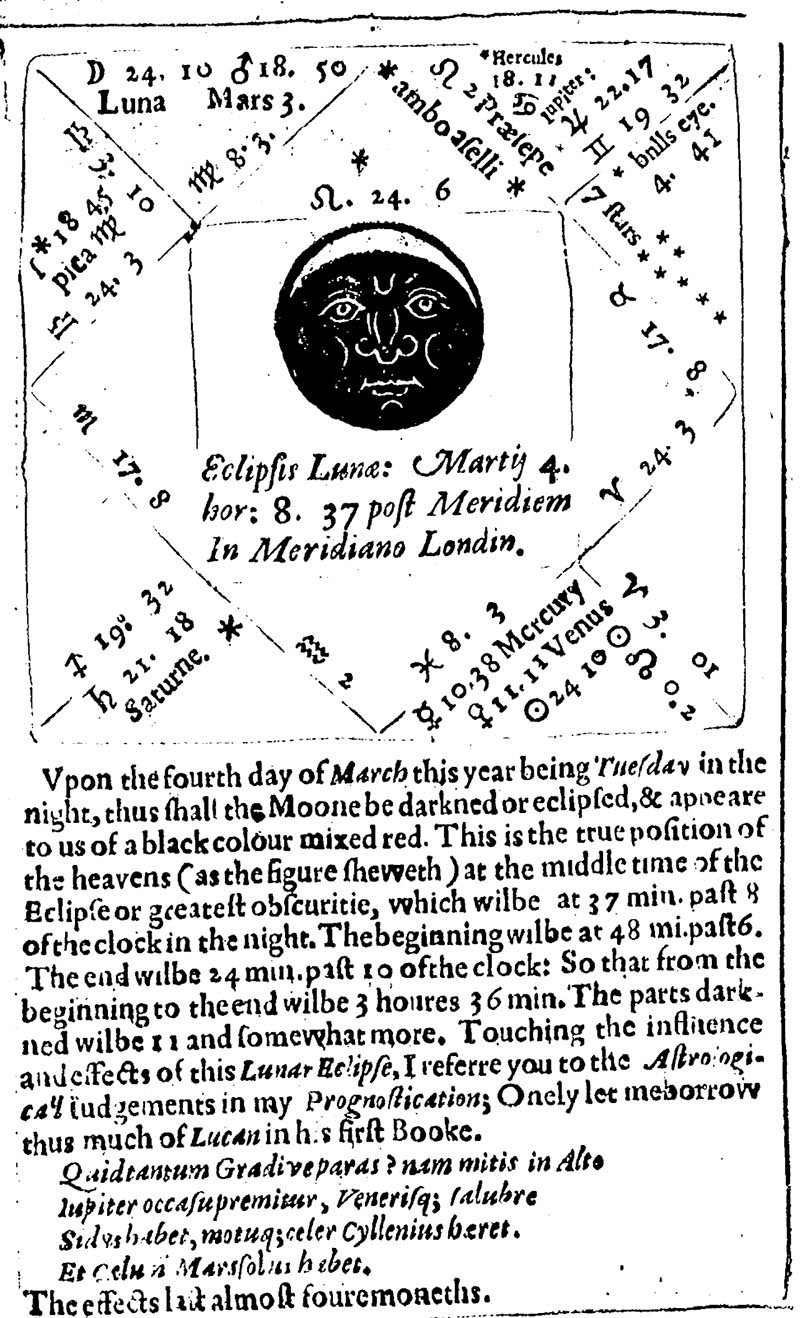Early Modern Astronomy
When Pulter alludes to astronomy, she signals an area of knowledge that had been rapidly changing in her lifetime. The older Ptolemaic view of the heavens, so important to poets, was being dismantled by Copernicus, Galileo, Tycho Brahe, Johannes Kepler, and others. Galileo, for instance, had turned his telescope to the heavens in 1609 and found that existing accounts of astronomy were hopelessly inadequate. Yale University Beinecke Library’s exhibition, “Starry Messenger: Observing the Heavens in the Age of Galileo,” displayed an array of printed books that demonstrated how curious people across early modern Europe were about new notions of the stars, comets, and heavens. “As these early pirated copies reveal,” the exhibition commentary notes, “Galileo’s Starry Messenger drew an immediate and fascinated audience. The illustrations were of particular interest, often issued in copies far inferior to the original.”"Starry Messenger: Observing the Heavens in the Age of Galileo," Kathryn James et al., Beinecke Library, Yale University, accessed May 25, 2018.

A printed version of Galileo’s drawings of the moon.
Galileo Galilei, Siderevs nvncivs, magna, longeqve admirabilia spectacula pandens (Frankfurt: Palthenianus, 1610). Beinecke Rare Book and Manuscript Library, Yale University. QB41 G33 1610. Image included in the "Starry Messenger” Digital Exhibit of the Beinecke Library, cited above.
Did Pulter read Galileo? In 2008, Sarah Hutton wrote that “[T]he cosmology [Pulter] imagines in her poems is … identifiably Galileian in its detail. … That a woman should be conversant with the most modern and most coherent cosmological theory of the time is especially intriguing. … Furthermore, it is clear that she did not share the doubts and uncertainties about ‘the new astronomy’ which John Donne articulates so memorably in ‘Anatomie of the World.’ Nor is there any trace of the fence-sitting agnosticism of Milton’s Paradise Lost. … [T]he cosmos which Hester contemplates is not the geo-centric universe of Ptolemy, but the heliocentric system of Copernicus. Furthermore, the details she gives in her description of the moon and planets indicate that the cosmos of her contemplations is the Copernican system as confirmed by Galileo.”
Hutton characterizes “The Eclipse” as a “spiritual reflection using the eclipses of both sun and moon built to contemplate fate and mortality. This topos itself is nothing new. But Pulter’s use of it is not conventional. She does not employ traditional eclipse motifs according to which eclipses were portents, signs of the wrath of God etc. Rather, her idea of an eclipse is the ‘modern’ view that eclipses are the result of the normal revolutions of the moon around the earth.”
With appropriate caution, Hutton concludes that while “Pulter may have had direct knowledge of Galileo’s writings,” there was “no English translation of Sidereus nuncius before the nineteenth century,” so her sources would either have had to be in Latin, Italian, or in some more mediated form. But Hutton argues that “It is by no means unlikely that she could have access to a copy of Sidereus nuncius, which circulated in England, where it was known to both specialist astronomers and educated laymen[.] … Were it to be established that she did indeed read Galileo, this would have implications for our knowledge about women, science and education in early seventeenth-century England. But even if her sources turn out to be literary, her poems show a clear understanding of the theories involved. We should not, of course, forget that the Starry Messenger was specifically addressed to a non-specialist audience and that Galileo later defended his claims about the moons of Jupiter in a letter addressed to a woman, the Grand Duchess Cristina de’ Medici (1613).” Sarah Hutton, “Hester Pulter (c. 1596-1678). A Woman Poet and the New Astronomy,” Etudes Epistéme [online]; DOI: 10.4000/episteme.729.
Through popular printed books such as John Booker’s A New Almanac and Prognostication (London, 1634), readers sought reassurance that the motions of the stars could be predicted, including the exact times for eclipses.

A new almanacke, and prognostication for the yeare of our Lord God. 1634. Being the second from leape yeare. Wherein besides the generall state of the yeare, is particularly set downe the daily disposition and inclination of the ayre, together with the time of great coniunctions, aspects, &c. and the moones eclipse (London 1634), sig. A2v. Copy from the Lambeth Palace Library.
When Michael Drayton poetically narrates the wars between Edward II and the barons, he draws on the conventional interpretation of imperfections in the heavens (such as comets, meteors, and eclipses) as caused by unnatural and horrific events on earth. The wars produce a solar and natural trauma:
Mortimeriados The lamentable ciuell warres of Edward the second and the barrons
- Tempestious thunders, teare the fruitlesse earth,
- The roring Ocean past her bounds to rise,
- Death-telling apparisions, monstrous birth,
- Th’affrighted heauen with comet-glaring eyes,
- The ground, the ayre, all fild with prodigies:
- Fearefull eclipses, fierie vision,
- And angrie Planets in coniunction.